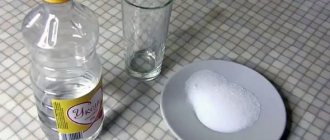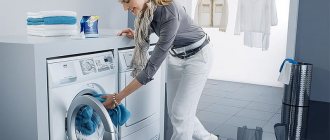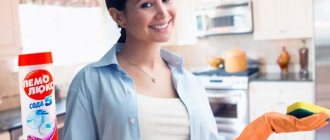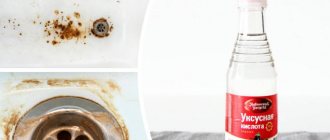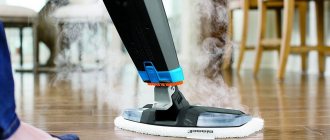Do we really need all the detergents stored in our kitchen and bathroom to clean our apartment? Those who care about the environment believe that... one is enough. The composition for washing and dishwasher can also be as simple as possible - and homemade. This is what Zero Waste activist Bea Johnson uses to do laundry, wash dishes, and clean any surface.
Over the years, marketing campaigns have managed to convince us that different household tasks require different means, and this has made our life incredibly complicated. Now we have some bubbles in the garden shed, others under the kitchen sink, and others next to the washing machine, all equally poisonous and expensive.
But our grandmothers had one powerful remedy for all occasions. Harmless and inexpensive, it cleans any surface, disinfects, and removes odors and grease. In the bathroom it will wash away mold, limescale and soap residues, during washing it will get rid of stains and soften laundry, and in the garden it will repel pests and weeds. I mean…
Benefits of these funds
- efficiency;
- availability;
- safety for human health.
When baking soda and vinegar are mixed, they create a foam that can be used to remove rust, mildew, grease, and dirty stains.
The disadvantage is the smell, but it can be easily removed with plain water or short airing.
Cleaning Sequence
Let's try to figure out how to clean a gas stove at home without extra costs and without harm. You need to choose the best product for yourself, prepare it yourself, and clean the gas stove. By testing, determine an effective method. There is no need to prepare a new composition every time. There is nothing more accessible and simpler than folk remedies for care. They are stored for several months in a cool, dark place.
The recipes listed may be modified depending on the availability of available materials at home. To effectively clean a gas stove, you need to follow the algorithm of actions. This is the only way to achieve the desired result.
We fight blockages
Hair and food debris clog your kitchen and bathroom pipes. Special products solve this problem, but at the same time cause allergies and spread a toxic odor that causes coughing and watery eyes. So use vinegar and baking soda. The method is notable for the fact that the cleaning agent is prepared directly in the pipe.
Instructions:
- Pour half a cup of baking soda and the same amount of vinegar down the drain.
- Close the hole with a stopper and do not use the sink for several hours.
- When the allotted time has expired, remove the plug and pour water heated to 90 degrees into the pipe.
Important: Strictly follow the proportions; vinegar and soda should be used in equal parts.
Dry cleaning the carpet with food powder
In order to quickly give the carpet freshness and remove dirt, you can use baking soda, which every housewife uses for household needs and cooking. If the powder is not available, it is difficult to buy it in the nearest store or market. It is easy to clean a carpet with baking soda at any time of the year, because the coating does not need to dry after cleaning.
First, vacuum the carpet to remove surface dirt. Then spread baking soda evenly, in a thin layer, over the carpet, as in the photo. After 30 minutes, vacuum the entire carpet 2-3 times to remove even the smallest particles of baking soda. If some of the powder remains, then when moisture gets in, the coating will feel sticky.
If you find a stain, use a slightly different method. Sprinkle a little more product onto the dirt and rub it into the pile with a brush. Thoroughly remove the soda after half an hour using a vacuum cleaner.
Tip : For a more thorough cleaning of the carpet, use a brush with a turbo attachment. It literally knocks out any debris and dust from the pile, and then the vacuum cleaner pulls it in. This device is especially relevant in a house where dogs and cats live, since it can be difficult to remove hair from the base of the carpet.
Cleaning the microwave oven
The microwave oven gets dirty very quickly and should be washed after each use.
Method 1 - for old and stubborn stains:
- If the contamination is too strong, take 2 tbsp. l. vinegar and pour them into a bowl of water.
- Place this container in the microwave oven and turn it on for 10 minutes. Steam with acid will quickly remove all stains, and all you have to do is wipe the surface with a napkin.
Method 2 - for medium dirt:
- Dried splashes are removed using the same principle. 1 tbsp. l. Add a spoonful of baking soda to a bowl filled with 400 ml of water.
- Start the oven for 3 minutes.
- Remove greasy stains.
Tip: If the surface of the microwave oven is covered with enamel, then use vinegar as little as possible.
Useful tips
- daily wiping the inner walls of the baking cabinet with detergent will save you from the need for frequent “general” washing procedures;
- To easily and quickly remove fresh streaks of fat in the chamber, before wiping the surfaces of the device, slightly warm up the kitchen appliances (to a temperature of 40-50 ⁰C) for 20 minutes;
- Before starting work on cleaning the oven, remove (if the design features of the device allow) the door from the oven: this will make cleaning the equipment easier;
- during the cleaning process, avoid contact of any detergents with the heating elements of the device or the fan;
- if, despite the ideal cleanliness of the internal surfaces, there is an unpleasant odor in the oven, crush 15 tablets of activated carbon, mix the powder with a glass of water and place the liquid in the oven overnight, closing the door. Thanks to the absorbent properties of coal, excess “aromas” will disappear.
IMPORTANT! To clean the oven, it is unacceptable to use steel wool, hard sponges, brushes and abrasive detergents - by removing plaque, you can damage the surfaces of the cabinet.
When cleaning the oven, strictly adhere to a certain algorithm of action and observe the proportions of the products required to prepare the cleaning solution.
The number of procedures for removing contaminants can be significantly reduced by using special lids during the baking process that prevent drops of fat from getting on the walls of the chamber.
You will find 12 recipes on how to clean the inside of the oven in this article.
Did you find this post helpful?
Not really
Getting rid of plaque in the kettle
Even the highest quality electric kettle is not immune to limescale deposits. As a result, the heating time increases, the device deteriorates, and the taste of the water becomes bitter. To avoid this, pour water into the kettle, add 100 ml of vinegar to it and turn on the device. Do not pour out the solution after it boils. It is advisable to leave the mixture overnight so that all the scale dissolves. You can do the same with soda (just slightly changing the proportions). For this we need 3 tbsp. l. soda and 1 liter of water.
Important: After cleaning with vinegar, wipe the kettle with a soda solution and rinse 3-4 times, each time removing drops with a dry cloth. Otherwise, the tea will taste like vinegar for a couple of days.
Baking Soda: Removes Grease, Plaque and Odor
Baking or drinking soda is sodium bicarbonate (bicarbonate). It is an inorganic substance in the form of a white fine-crystalline powder with the chemical formula NaHCO3. It is a soft abrasive, absorbs grease, and neutralizes odors. Cleaning properties are due to the ability to provoke chemical reactions when interacting with water, dirt and other substances.
Chemical properties of baking soda:
► Soda dissolves perfectly in water, in tandem with which it turns into a universal, slightly alkaline kitchen cleaner with a pH of 8.1 (in a 5% aqueous solution).
► Baking soda reacts with acids, including acetic and citric acids. During the reaction, the substance decomposes into water and carbon dioxide, the formation of which is accompanied by hissing, the active formation of air bubbles and the dissolution of contaminants.
► A chemical reaction also occurs when the soda solution is heated to a temperature of more than 60 degrees. In this case, baking soda also breaks down into carbon dioxide, water and sodium carbonate Na2CO3.
Read the blog: “Caution, chemicals: how household cleaning products affect your health.”
What can you clean with baking soda?
Dry soda gently removes plaque due to its abrasive properties and effectively degreases surfaces due to its ability to absorb liquids.
What you can do with baking soda:
♦ Clean porcelain plates and cups from dark deposits.
♦ Rub cutting boards to remove dirt and fishy odors.
♦ Remove plaque from enamel cookware.
A soda solution with water acts like any other alkali: it breaks down fat into glycerol and fatty acid salts. To remove old grease deposits, many housewives mix baking soda with vegetable oil, which (oddly enough) helps sodium bicarbonate loosen the bonds of dirt to the surface.
What can be done with soda “mush”:
♦ Clean the kitchen apron from grease deposits.
♦ Clean the inner walls of the oven and microwave from grease.
♦ Remove congealed grease from the facades of kitchen units.
Life hack: mix baking soda with vegetable oil in a 1:1 ratio. Apply the mixture to a kitchen apron, previously moistened with warm water. After 20 minutes, wash off the “gruel” along with the dissolved fat with a damp sponge.
Baking soda will clean dishes and silver jewelry
To clean silver, you will need an aluminum pan, since it is aluminum that will participate in the chemical reaction with soda and silver sulfide deposits. If you don't have aluminum cookware, place aluminum foil in the bottom of any metal pan.
How to clean silver with baking soda:
♦ Place silver items in an aluminum pan.
♦ Boil 2 liters of water in a separate saucepan and add 2 tablespoons of soda to the boiling water.
♦ Pour the soda solution into the pan with silver. When it comes into contact with aluminum, a chemical reaction will begin, as a result of which sulfur will be released from silver sulfide (dark plaque).
Baking soda absorbs unpleasant odors:
♦ Place baking soda in a small bowl and add a couple drops of your favorite essential oil. Place a homemade fragrance in the bathroom.
♦ Place a bowl of baking soda on the refrigerator shelf. Change the natural odor absorber once a week.
♦ Sprinkle 1 tablespoon of baking soda into your sneakers. After 7-8 hours, pour out the powder or vacuum it up.
Read the blog: “How to choose alkaline grease removers in the kitchen.”
Order cleaning with hypoallergenic products in St. Petersburg and the Leningrad region
Washing the dishes
An eco-friendly lifestyle is not just a fashion statement, but a concern for your health. You can replace synthetic dishwashing detergent with a safer analogue. A damp sponge dipped in soda effectively removes soot, soot, tea stains and yellowness. If unattractive stains remain on your crystal glasses after washing, rinse them in water with vinegar added. This method will make the dishes sparkle and destroy pathogens.
Preparatory stage
To clean a technical device, you must first prepare:
- Wait until it cools down completely.
- Shut off the gas supply so that the washing process is completely safe.
- Remove the top grill and removable burners; they will be washed separately.
- It is better to wear protective gloves to protect your skin from the negative effects of chemical solutions.
- Prepare all the necessary tools that will be used in the work.
Removing stains from the sofa
Unpleasant odors, stains from coffee, fruits and juices - all this can be removed with a homemade product:
- To 0.5 liters of water add 150 ml of vinegar, 1 tbsp. l. soda and 100 ml of alcohol.
- Pour this mixture into a spray bottle and spray on the sofa.
- After 15 minutes, scrub the stain with a brush and then blot with a clean, damp cloth.
- Dry and vacuum the sofa.
Tip: Use baking soda separately for dry cleaning of furniture.
How to use vinegar for laundry
- Soften laundry: half a glass of vinegar in the fabric softener compartment will prevent the laundry from becoming hard and yellowing, and at the same time reduce static electricity.
- Remove stains: pour pure vinegar on stains from mustard, pencil, pen, crayons, scrub with a toothbrush, and then wash as usual.
- Remove sticky stains from clothes by soaking them in warm vinegar. First freeze the gum and peel it off, and use warm vinegar to remove the remaining residue.
- Fix the color: If the item fades in the wash, soak it in vinegar to fix the dye.
- Fix zippers: If a zipper gets stuck, spray it with vinegar, zip it up and down a few times, and it will work again.
Advertising
Washing the tiles
Cleaning the tiles and removing dirt between the tile joints is not difficult:
- Pour half a glass of soda into a bowl, add 2 tbsp. l. vinegar, lemon juice and water.
- Apply the product to the brush and scrub the tiles, paying special attention to dark joints where mold forms.
- Then simply wipe the surface with a clean cloth.
Security measures
Many chemical detergents contain aggressive substances that, when they evaporate or get on the skin of the hands, can cause an allergic reaction and burns.
Even harmless, at first glance, home remedies - citric acid, soda - also negatively affect the skin and mucous membranes upon direct contact with them, causing various irritations and peeling.
Vinegar is a wonderful cleaning product , however, if you decide to use this product to wash surfaces, also be careful - the acid it contains can cause skin burns.
Therefore, when starting to clean the oven, be sure to wear rubber gloves (remove all jewelry first) and while working, make sure that the product you use does not get into your eyes.
IMPORTANT! If the detergent comes into contact with the skin or mucous membranes of the organs of vision, immediately rinse your hands or eyes with plenty of clean water.
To ensure that during operation you have free access to all internal surfaces of the device, before carrying out the procedure, remove all racks from the oven, remove dishes and baking sheets.
Find out how to clean a gas oven - 13 recipes for use at home.
Cleaning the frying pan with household chemicals
Professional products will clean stubborn grease, soot, burns, soot, and other complex contaminants.
Rated spray pan cleaners:
- “Organics cleaner for cleaning frying pans with Teflon and ceramic coating”;
- Grill-2 cleaner for cooking equipment and frying surfaces;
- “Professional Anti-grease OfficeClean Grease and carbon remover”;
- “Bugs Shumanit Grease Remover”;
- "Azelit GraSS Anti-fat Shiny cauldron";
- "EasyWork for cleaning kitchen ovens and stoves, utensils."
Rated products will help remove all types of contaminants from cocotte makers, sajas, frying pans, tagines, cauldrons, stewpans and other types of frying pans.
How to clean a frying pan with household chemicals:
- Let the pan cool.
- Wipe with a paper napkin to remove excess fat and food.
- Spray on all sides. The frying pan is hermetically sealed in a bag if you use Schumanite, Azelite or other strong-smelling chemicals.
- Leave for 2–60 minutes (the duration is indicated on the product label).
- The product is washed off with a sponge and running warm water.
- The dishes are scrubbed and rinsed under the tap up to 3 times (until the product is completely washed off).
- The dishes are dried.
Work with household chemicals wearing rubber gloves, in a room with an open window.
Household chemicals can be used to easily clean stubborn stains from any kitchen utensils.
Video review of various means:
Lemon acid
It is gentle on the surface of the stove, but harmful to fat.
Acid breaks down plaque and also has a good abrasive effect, which additionally removes dirt.
Necessary:
- Moisten the stain with a damp sponge.
- Apply a tablespoon of citric acid granules.
- Let stand for 3-5 minutes, then walk over the surface with the hard side of the sponge.
To increase abrasiveness, citric acid can be mixed with coarse table salt and the manipulation can be repeated.
Advantages:
- A safe method that does not cause irritation upon contact with exposed skin.
- Removes old stains well.
- Makes the surface glossy.
- Gives a pleasant lemon aroma.
Flaws:
- Not suitable for daily cleaning as it contains a high level of acidity.
Expert opinion
Borodina Galina Valerievna
If there is a lemon left in the refrigerator that will no longer be used for food, you can cut it into pieces and walk over the dirty surfaces of the stove. Light stains will quickly disappear even without a sponge, and the hob will get a shine.
What to do if there is a dense layer of fat?
What products do you use to clean the stove?
FolkChemical
If we are talking about old fat deposits that have almost never been removed, before cleaning you should:
- Take a narrow spatula and, using light pressure, remove the fat, getting as close to the surface of the slab as possible.
- Using a wide brush, distribute boiling water evenly in particularly difficult areas, let stand for 20-30 minutes.
- When the grease coating becomes soft, repeat the procedure, but be very careful, as careless movements can scratch the slab.
If there is no opportunity or time to tinker, and the result is needed in the shortest possible time, you can use heavy artillery in the form of special equipment.
Grease remover "Unicum"
It is necessary to distribute the product over the surface of the stove, leave for a few minutes and rinse off with a damp sponge. The product is recommended to be used only for difficult stains, since it contains aggressive substances that can destroy the protective enamel with frequent cleaning.
Advantages:
- Has a convenient sprayer.
- Does not require additional effort in the form of friction.
- Residues are easily removed.
Flaws:
- Relatively high cost and fast consumption.
- Unpleasant pungent odor.
It can be used not only for the stove, but also for ovens, where greasy deposits are especially difficult to remove.
Mr Muscle kitchen expert
This product is suitable for all slab surfaces, as well as adjacent surfaces. Does not contain harmful and highly toxic substances.
Advantages:
- Sprays easily and quickly breaks down grease.
- Suitable for daily cleaning.
- The smell of freshness and cleanliness.
- Destroys bacteria (up to 99%).
Flaws:
- Relatively high cost.
The cleaning agent is sprayed onto the surface, allowed to soak in for 5-10 minutes, after which the remaining dirt is removed with a sponge.
Cillit Bang anti-fat
The product contains a complex formula that can remove greasy deposits and deposits not only on the stove, but also in the oven, microwave ovens, and baking dishes. Easy to apply to the surface, the foam does not spread.
Advantages:
- Reduces cleaning time.
- There is no unpleasant chemical smell.
- Leaves a glossy surface.
- Has a large bottle volume.
Flaws:
- Not identified.
Suitable for daily cleaning, easily copes with dirt. The product does not cause chemical burns upon contact with skin.
Cif anti-fat
An ideal product for everyday cleaning of the oven, but it will not cope with heavy fatty deposits.
Advantages:
- Easy to apply.
- Leaves a streak-free shine.
- Nice smell.
- Relatively low price.
Flaws:
- Small volume.
- Not suitable for marble and painted surfaces.
The composition of the product is gentle, but for safety you should use rubber gloves.
Removing carbon deposits
There are several effective ways that can solve the problem of carbon deposits:
Activated carbon
Several tablets should be crushed to a powder state. Next, you need to pour the resulting powder onto the dirty areas and soak thoroughly with warm water, let it sit for a while. Then wash everything with a wet cloth.
Anise-ammonia drops
They need to be dripped onto dirty places and sprinkled with a little baking soda on top. Leave everything for a short period of time and rinse the stove well with a wet cloth, and finally wipe the surface until dry.
Ways to use salt
Every home has a pack of table salt. You can't cook main dishes without it. But meanwhile, salt is an excellent cleaner and odor absorber. It has disinfectant properties. In a 10% saline solution, most microbes die. Salt is 100% hypoallergenic and safe for health. How is it used to clean car interiors?
- Salt removes dust, grease and greasy stains on upholstery. If the seat is covered with a sticky coating, has acquired an unsightly greasy sheen, or you accidentally spilled something greasy on it, use dry table salt. Spread it over the surface of the fabric in a layer of 1–2 cm and rub it with a brush. When the grains turn a dirty gray color, vacuum them up.
- Salt from the smell of dampness and excess moisture. In wet, slushy weather, it is very useful to place a paper pack of salt in the car. There is no need to spill anything. It is enough to put it in a secluded place in the car and take it home every 3 days to dry it on the radiator.
We recommend: Advantages and disadvantages of homemade odor absorbers for residential premises


